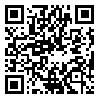Volume 5, Issue 3 (Volume 5, Number 3 2014)
jdc 2014, 5(3): 117-123 |
Back to browse issues page
Download citation:
BibTeX | RIS | EndNote | Medlars | ProCite | Reference Manager | RefWorks
Send citation to:



BibTeX | RIS | EndNote | Medlars | ProCite | Reference Manager | RefWorks
Send citation to:
Hamidizadeh N, Dastgheib L, Ranjbar S, Handjani F, Jafari P. Octopirox 1% shampoo versus ketoconazole 2% shampoo in the treatment of pityriasis versicolor: A randomized, controlled, double-blind clinical trial. jdc 2014; 5 (3) :117-123
URL: http://jdc.tums.ac.ir/article-1-5082-en.html
URL: http://jdc.tums.ac.ir/article-1-5082-en.html
1- Molecular Dermatology Research Center, Shiraz University of Medical Sciences, Shiraz, Iran , nhamidizadeh@gmx.net
2- Department of Dermatology, Shiraz University of Medical Sciences, Shiraz, Iran
3- Molecular Dermatology Research Center, Shiraz University of Medical Sciences, Shiraz, Iran
4- Department of Biostatistics, Shiraz University of Medical Sciences, Shiraz, Iran
2- Department of Dermatology, Shiraz University of Medical Sciences, Shiraz, Iran
3- Molecular Dermatology Research Center, Shiraz University of Medical Sciences, Shiraz, Iran
4- Department of Biostatistics, Shiraz University of Medical Sciences, Shiraz, Iran
Abstract: (17152 Views)
Background and Aim: Pityriasis versicolor (PV) is a fungal infection of the skin that is caused by Malassezia species in tropical and subtropical areas. Various treatments such as ketoconazole 2% shampoo are effective in the treatment of PV. In this study, the therapeutic effects of ketoconazole 2% shampoo and Octopirox 1% shampoo on PV were compared.
Methods: Fourty-two patients participated in the study. Twenty-five patients were treated using Octopirox 1% shampoo and 17 patients were treated by ketoconazole 2% shampoo. Each shampoo was administered for 5 minutes after daily showers for three weeks. At the end of the treatment period, patients were evaluated on the basis of the results KOH test and clinical examinations.
Results: At the end of the treatment period in ketoconazole 2% shampoo group, 64.7% of patients were cured. In Octopirox 1% shampoo group, 44% of patients were cured. The detected difference was not statistically significant (P=0.187).
Conclusion: Both shampoos were effective in eliminating the symptoms, but ketoconazole 2% shampoo was more effective in improving the associated hyperpigmentation and erythema than Octopirox 2% shampoo. No side effects were observed in either group.
Type of Study: Research |
Subject:
General
Received: 2015/01/5 | Accepted: 2015/01/5 | Published: 2015/01/5
Received: 2015/01/5 | Accepted: 2015/01/5 | Published: 2015/01/5
Send email to the article author
| Rights and permissions | |
 |
This work is licensed under a Creative Commons Attribution-NonCommercial 4.0 International License. |





